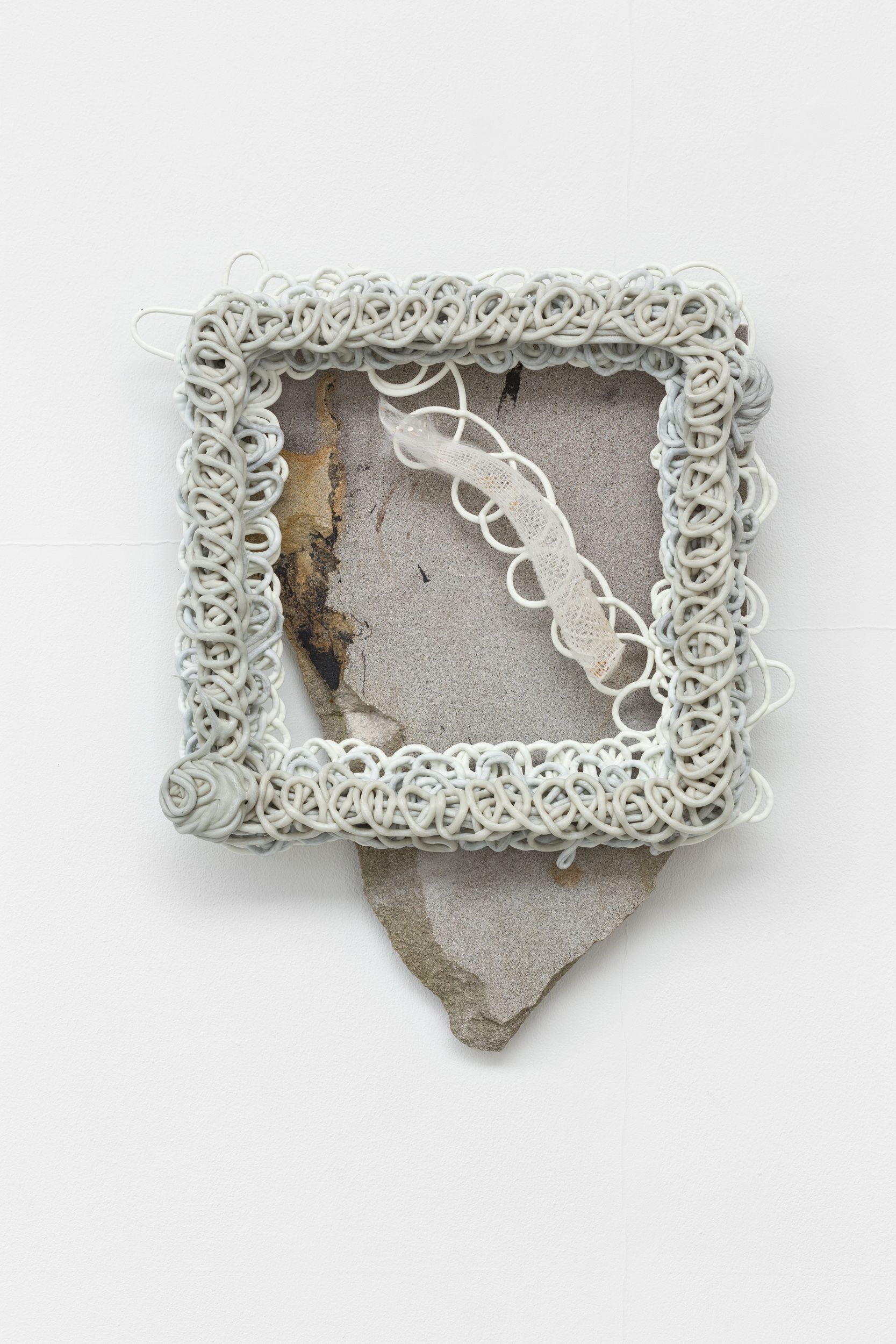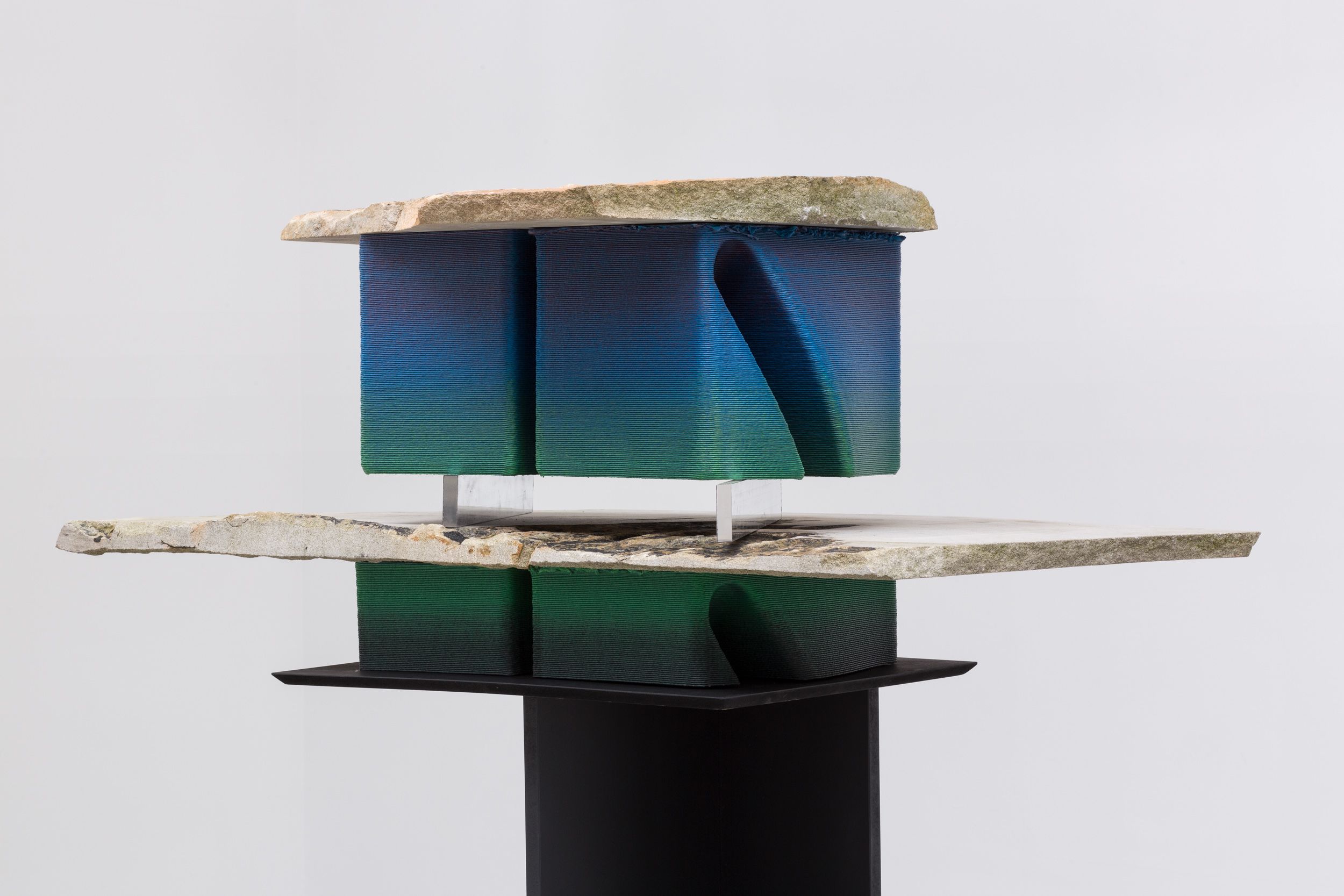25 july 2023, Flor Linckens
Last chance: David Jablonowski's latest works
Until 29 July, Galerie Fons Welters in Amsterdam presents a solo exhibition by David Jablonowski. Through his sculptures, videos and installations, the German artist investigates, among other things, the evolution process of contemporary communication technologies and the potential of communication in contemporary visual culture. For his latest works, the artist entered into a new direction. In these works, he refers to his home region, the Ruhr area in Germany, to say something about the continuing impact of industrialisation, among other things.
Jablonowski focuses his attention on language as a technically reproducible code and its aesthetic development in relation to the transfer of knowledge and information. The artist is interested in the complexity of these infrastructures. In his practice, he plays with the sculptural quality of communication techniques and reflects on the influence of technological processes on society and the shape of objects.

DAVID JABLONOWSKI, Framed Commodity futures (hard, organic, recyclable/ renewable) I, 2023, Galerie Fons Welters
Jablonowski's practice is characterised by his research into the relationship between technology, industrial materials and communication. He is known for his inventive use of materials: Jablonowski often combines machines and technologies that are used for information exchange, such as scanners, tablets, projectors and printing plates, in addition to 3D printed material, glass, aluminum, carbon fiber and organic elements such as spices, paper (for example old manuscripts) and grain. In his latest works, which are currently on show in Galerie Fons Welters, he uses Ruhr sandstone, 3D printed material from recycled plastic and virgin pigments.
Jablonowski's sculptures are a contemporary interpretation of classical sculptural principles and minimalism. In doing so, he refers to Western art history while at the same time exploring the influence of technology on contemporary society. For example, in his previous exhibition 'Hype Cycle', Jablonowski examined the relationship between elements on the internet, digital marketing and data predictions. He also looked at the ways in which technology influences our behavior and the ways in which big data is used to understand and, more importantly, predict consumer behavior, specifically in the context of new trends and hypes.

DAVID JABLONOWSKI, Commodity Futures (virgin/waste/renewable/recycled) II, 2023, Galerie Fons Welters
Jablonowski studied at the Gerrit Rietveld Academy and Kunstakademie Düsseldorf, followed by a residency at De Ateliers and a period at the International Studio & New York Curatorial Program (ISCP). He won a Charlotte Kӧhler Prize and his work has been shown at the Centraal Museum, Kunstmuseum Den Haag, Kunsthalle Baden-Baden, Kunsthalle Basel, Baltic Center for Contemporary Art, the Westfälischer Kunstverein, De Vleeshal, Museum Haus Lange and Dallas Contemporary, among others. You can find his work in the collections of the Stedelijk Museum, Kunstmuseum Den Haag and the BundesKunstsammlung, among others.
